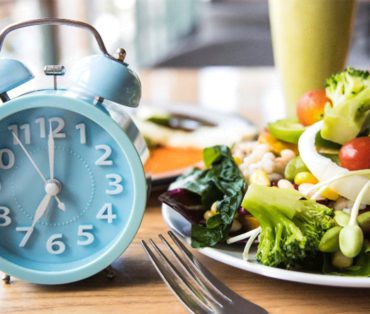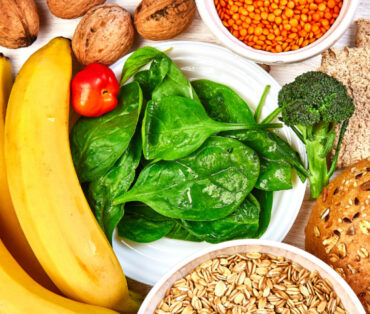“Curve” Your Cravings
Most of us know the feeling when we just HAVE TO HAVE something, be it chocolate, garlic bread, potato chips, red meat—pick your poison. According to a study published in the journal Appetite, 97 percent of women and 68 percent of men report getting food cravings, at least now and then. Be they normal, food cravings are the enemy if you are following a weight loss eating plan.1
For decades, people thought food cravings came from a legitimate biological need for certain nutrients. A craving for steak, for example, was thought to stem from iron deficiency. This may not be entirely false, but if it’s the case, why don’t nutrient-starved women crave tofu and leafy greens?1
Because it’s not that simple; there’s more to cravings than nutrient deficiency alone. Some research shows cravings may be more psychological than they are biological, in fact. In one study, researchers looked at brain images of participants after they drank a nutritional shake that eliminated their hunger and asked them to describe their favorite foods. The researchers found that food cravings stimulated the same the areas of their brains that light up when people are addicted to drugs.1
Hormones also play a role. When we give in and eat the food we crave, we feel satisfied in part because hormone receptors pick up the feel-good chemicals that result. Over time, these receptors may become dulled to the hormones our bodies produce when we enjoy our favorite foods, and we may need to eat more of these foods to get the same effect.1
Other things that can trigger cravings include being at a place where you normally eat that food, a certain time of day (think your office at the 2:00 slump), and stress. Naturally, eliminating food craving triggers is a good first step in getting them under control. Beyond that, here are some things you can try1:
Keep things interesting
We know a healthy diet is one that includes a variety of foods, with an emphasis on vegetables, fruits, lean proteins, and whole grains. What you might not realize is that by varying the types of foods you eat within the parameters of a healthy eating plan, you can help control cravings for outside unhealthy offenders. In a study published in Psychology and Behavior, for five days, healthy men and women followed a healthy diet plan that met all their nutritional needs but consisted only of nutrition shakes. The people following this monotonous diet reported having significantly more food cravings than they did when their diet included more variety.1
Question the craving
When cravings strike, it’s easy to calm them by mindlessly eating the food as you rush through a busy day. Next time one strikes, try asking yourself the following questions: Am I hungry? Does that food have nutritional value? Does this food fit into a weight loss eating plan? For one, stopping to talk to yourself about the food may give you the pause you need to forego it. And if the answer to any of the questions is “no,” your mind will hopefully guide you to do the right thing—avoid eating the food you crave.5
Take your mind elsewhere
Research shows that cravings can come from memories, particularly memories that involve certain visuals and smells. So, to beat a craving when it strikes, try to keep those areas of your brain occupied. Picture yourself engaged in an activity you love, maybe walking in the woods, doing yoga, or lying on the beach. You could even imagine yourself sweating it out during your full body workout at Curves! Picture whatever you can to keep the imagery areas of your brain occupied and away from food.5
Hit the circuit
Better than just picturing yourself at Curves, why not actually do your whole body workout to curb a craving? In one study, women who walked on a treadmill in response to a chocolate craving were less likely to still want it when they were done. Plus, this tactic will help you get your exercise in for the day.4
Schedule the food into your healthy eating plan
Sometimes giving into a craving is the best thing you can do to make it go away…provided you give in on your own terms. Maybe make Sunday evening your “few pieces of dark chocolate” or “handful of potato chips” time. If you know you’ll be able to have some of the food at some point and can look forward to it, you will be less likely to give in and eat it on a whim.5
Fight fire with fire
Just as your sense of smell can trigger a craving, it can help curb one, too. Happy smells will perk up your brain and make you less likely to crave unhealthy foods. The trick is to go for a scent that’s pleasant but doesn’t smell like a food, especially like the food you’re craving. Light a candle or burn incense that smells like sage, jasmine, peppermint, or rosemary.2
Eat the food with others
Most people are more apt to overdo it when they give in to a craving if they eat the food by themselves. So instead, wait until you are at a barbecue with friends to have that burger, or for a girls’ night out to have that glass of wine. People tend to eat smaller amounts when they are in the company of others, especially when it’s people who support their weight loss eating plan.5
Sources







